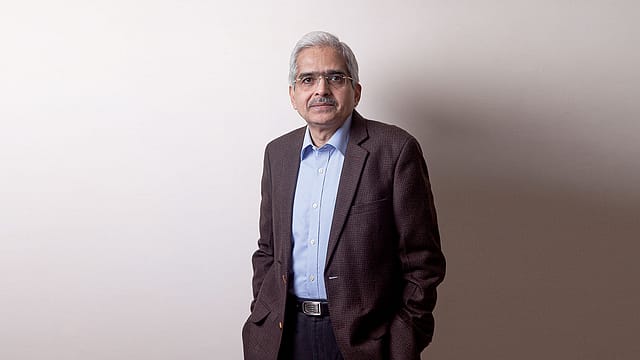Economic recovery likely to be gradual: Das
ADVERTISEMENT

A day after the number of Covid-19 cases in India hit the 5-million mark, Reserve Bank of India governor Shaktikanta Das warned that the rising infections could pose a threat to economic recovery.
Delivering the keynote address at FICCI’s national executive committee meeting on Wednesday, the RBI governor pointed out that the provisional estimates of GDP for the April-June quarter of FY21, released by the Ministry of Statistics and Programme Implementation in end-August, was a telling reflection of the ravages of Covid-19. For the record, India’s GDP for the quarter ended June 2020 contracted by 23.9% over the previous year; it had grown 5.2% in the corresponding period last year.
However, there was hope. Das said that high frequency indicators of agricultural activity, PMI for manufacturing, and private estimates for unemployment point to some stabilisation of economic activity in Q2 (the quarter ending September 2020), while contractions in several sectors are also seen easing.
“The recovery is, however, not yet fully entrenched and moreover, in some sectors, upticks in June and July appear to be levelling off,” the RBI governor said. “By all indications, the recovery is likely to be gradual as efforts towards reopening of the economy are confronted with rising infections,” he warned.
On financial market conditions in India, Das said the significant easing across segments in response to the front-loaded cuts in the policy repo rate and large system-wide and targeted infusion of liquidity by the RBI. He said that despite a substantial increase in the borrowing programme of the government, persistently large surplus liquidity conditions have ensured non-disruptive mobilisation of resources at the lowest borrowing costs in a decade.
January 2026
Netflix, which has been in India for a decade, has successfully struck a balance between high-class premium content and pricing that attracts a range of customers. Find out how the U.S. streaming giant evolved in India, plus an exclusive interview with CEO Ted Sarandos. Also read about the Best Investments for 2026, and how rising growth and easing inflation will come in handy for finance minister Nirmala Sitharaman as she prepares Budget 2026.
According to the RBI governor, in August, the yield on the 10-year G-Sec benchmark surged by 35 basis points (a 100 basis points make 1%) amid concerns over inflation and further increase in supply of government papers. And, following the RBI’s announcement of special open market operations (OMOs) and other measures to restore orderly functioning of the G-Sec market, bond yields have softened and traded in a narrow range in September.
While bank credit growth remained muted, the RBI governor pointed out that scheduled commercial banks’ investments in commercial paper, bonds, debentures and shares of corporate bodies in this year (up to August 28) increased by ₹5,615 crore, as against a decline of ₹32,245 crore during the corresponding period last year. “Moreover, the benign financing conditions and the substantial narrowing of spreads have spurred a record issuance of corporate bonds of close to ₹3.2 lakh crore during 2020-21, up to August,” he said.
On the RBI’s immediate policy response to the pandemic, Das said that the focus in India has been to prioritise stabilisation of the economy and support a quick recovery. “Polices for durable and sustainable high growth in the medium-run after the crisis, nevertheless, are equally important,” he told the virtual gathering.
Further, on the pandemic, he also warned that by any reckoning, Covid-19 will leave long-lasting scars on productivity levels of countries around the world. Quoting a recent World Bank assessment, Das emphasised that Covid-19 could entail adverse effects on productivity because of dislocation of labour, disruption of value chains, and decline in innovations.
According to the World Bank, during earlier episodes of epidemics in the past—SARS, MERS, Ebola, and Zika—productivity is estimated to have declined by about 4% over three years. “The Covid-19 impact on productivity could be expected to be much larger,” the RBI governor said.
